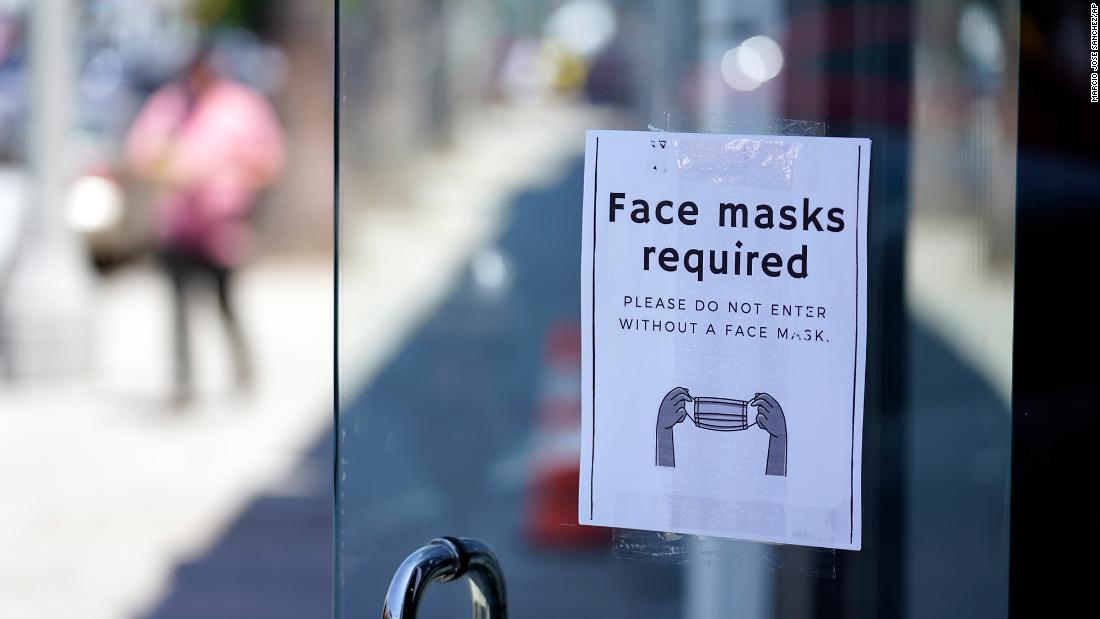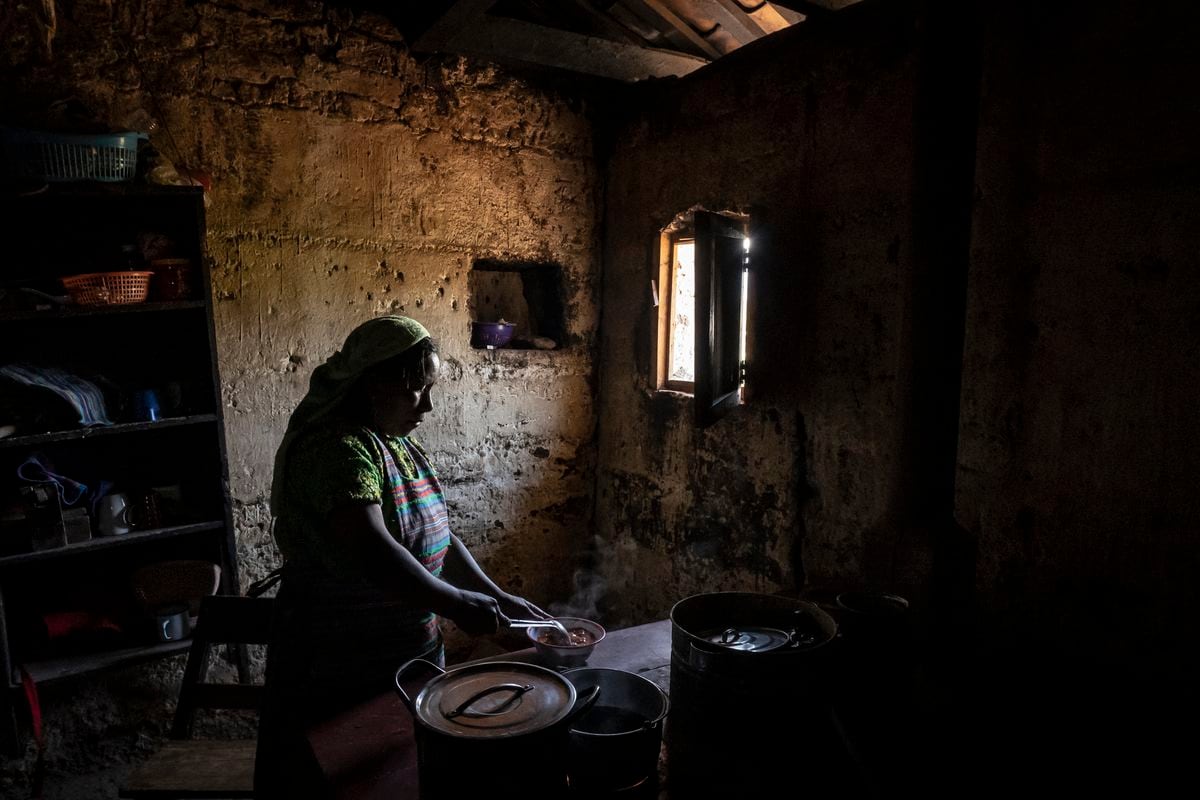Fauci: You have to get vaccinated to end the covid-19 0:54
(CNN) -
The health guide published on Tuesday recommends that fully vaccinated people wear masks indoors if they are in areas with "substantial" or "high" transmission of covid-19.
But what is the real meaning of "substantial" and "high"?
The two terms are part of the four-tier system of the U.S. Centers for Disease Control and Prevention (CDC) that measures the level of community transmission in each county: low, moderate, substantial and tall.
On the CDC website, you can search by state or county and click on the color-coded map to see how active the virus is where you live.
A county's transmission level is based on just two metrics: new COVID-19 cases per 100,000 people and the positivity rate, both of which span the past seven days.
The basic idea is that these metrics show how much virus is spreading around us, said Dr. Leana Wen, CNN medical analyst.
Delta variant travel restrictions: tourists wonder where and if they should go
"The level of transmission of the coronavirus is an important determinant of how much risk you are at, whether you are vaccinated or not," he said.
Specifically, a "low" transmission is considered no more than 10 cases per 100,000 people, or a test positivity rate of less than 5%.
The "moderate" transmission is 10 to 50 cases per 100,000 people, or a positivity rate between 5% and 8%.
The "substantial" transmission is 50 to 100 cases per 100,000, or a positivity rate between 8% and 10%, and the "high" transmission is 100 or more cases per 100,000 people or a positivity rate of the 10% or more.
advertising
If a county has values at two different transmission levels, then the CDC uses the metric that is higher.
On the CDC map, lower counties are represented in blue, moderate counties are in yellow, substantial counties are in orange, and upper counties are in red.
Counties vary in size, so it is also a good idea to check the website of a city, state, or municipality's health department.
Get vaccinated as soon as possible if you still do not do it, ask a doctor 1:32
As of Wednesday, about 50% of counties have high transmission and 17% have substantial transmission, covering wide swaths of the south and west, according to CDC data.
About 27% of US counties are considered to have moderate transmission and only about 9% have low transmission.
Health officials say this new guide, an update from May, reflects the latest science on the most transmissible Delta variant and evidence suggesting that vaccinated people can still spread the virus.
The vast majority of the spread still appears to come from unvaccinated people, who are at much higher risk for serious diseases that can send people to hospital or kill them.
Why the delta variant is spreading much faster than other variants of the coronavirus
The mask-wearing guide is meant to remind people who are fully vaccinated that they could infect others, CDC Director Dr. Rochelle Walensky said Tuesday.
The strengths and weaknesses of the CDC system
Several medical experts disagreed with parts of the CDC's decision to update the mask wear guide and its specific metrics.
For one thing, the CDC system relies solely on new cases and positivity rate, but not on vaccinations, hospitalizations, deaths, or any of the other relevant metrics that experts have come to know since the pandemic began.
"If you were to ask me how I define a community that has high transmission, I would say, 'I don't look at any numbers,'" said Dr. Peter Hotez, dean of the National School of Tropical Medicine at Baylor School of Medicine.
"I don't look at the positivity rate, the rate per 100,000, I don't look at hospitalizations or deaths. I look at it all together to get a real idea of what's going on at a really high level."
Three states are seeing about 40% of new US covid-19 cases.
Hotez also objected to the CDC using 100 cases per 100,000 people as a "high" level of transmission, which he said was a low bar.
As cases continue to rise in the coming weeks, the CDC's map is likely to become less useful, he said.
"Everything will turn red very soon, and that's not good either because you don't give vaccines a lot of credit," he said.
Wen noted that the CDC's metrics do not account for an area's vaccination rate.
"I wish the CDC had linked indoor mask use to vaccination rates in a community. That's something that people can work on, and it's somewhat less arbitrary," he said.
"It is also more motivating as an incentive," he added.
How to defend the youngsters of the delta variant?
4:17
Also, both the case rate and the positivity rate are based on the amount of testing in a community, and it is not clear whether the US is doing so at a sufficient level.
"I don't think we're doing a good job of measuring how much spread is happening in this country," Dr. Scott Gottlieb, former US Food and Drug Administration (FDA) commissioner, said Wednesday. , in the morning issue of NPR.
"I think we have a lot more spread than we are getting."
The United States is not doing a lot of testing, he said, and many of the tests are done at home and not reported to local authorities.
And many people who are getting sick now or experiencing mild symptoms do not seek evidence.
"Generally speaking, the people presenting for testing are people who are getting very sick or people who are developing mild symptoms of COVID-19 such as loss of taste or smell," he said.
"So we are probably detecting a very small fraction of the infections overall."
Wen was equally skeptical about the level of evidence in parts of the US.
"I'm not sure the total number of cases gives the most accurate picture, but it is at least a reasonable approximation," she said.
Still, his main problem with the CDC guidance was that it did not reach the bottom line of this phase of the pandemic: vaccinating people.
"The main problem is not the vaccinated, it is the unvaccinated. Let's not do this the other way around," he said.
Biden warns unvaccinated about delta variant 1:51
CNN's Naomi Thomas, Jacqueline Howard, Deidre McPhillips and Maggie Fox contributed to this report.
coronavirusCovid-19









